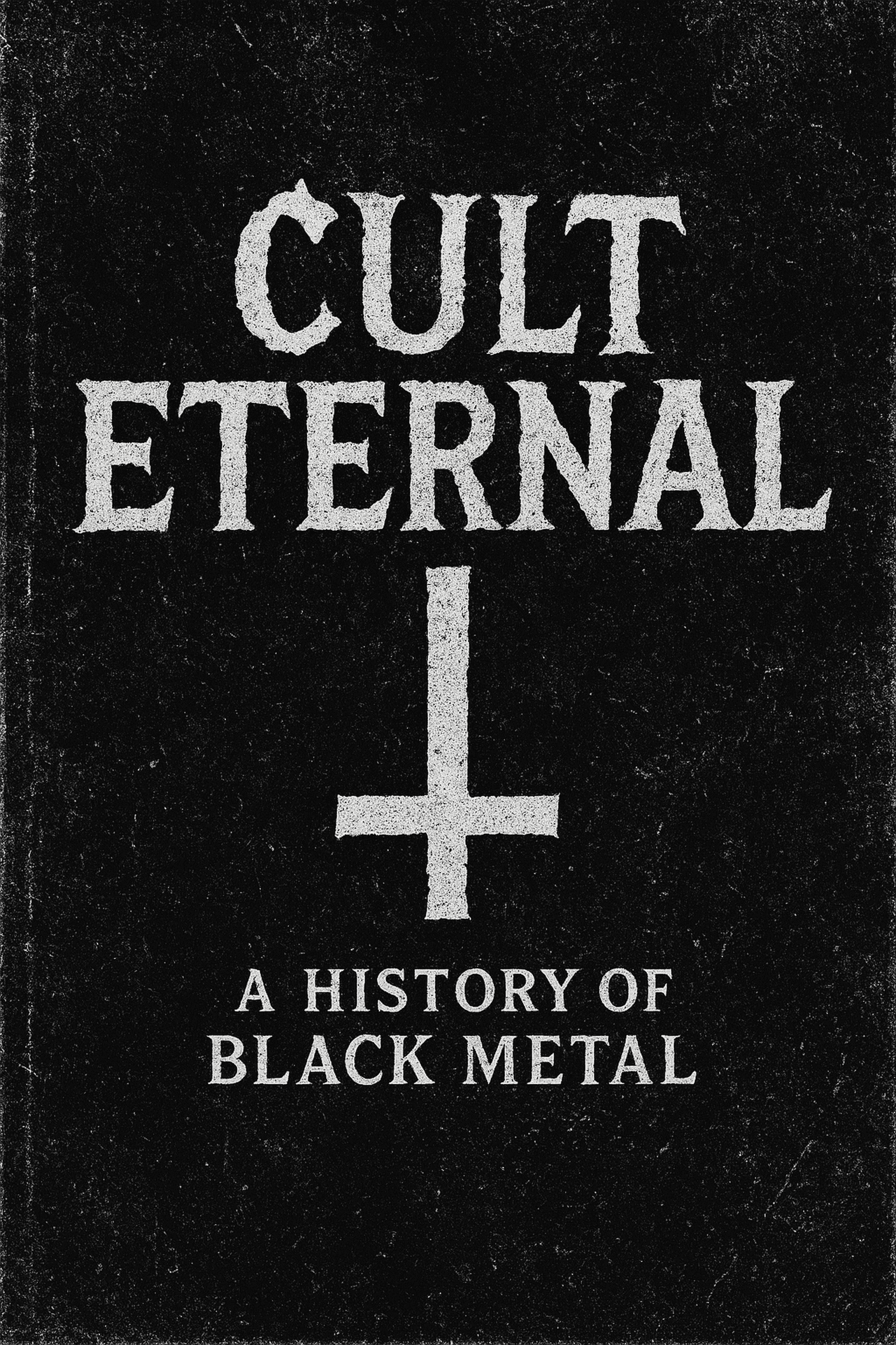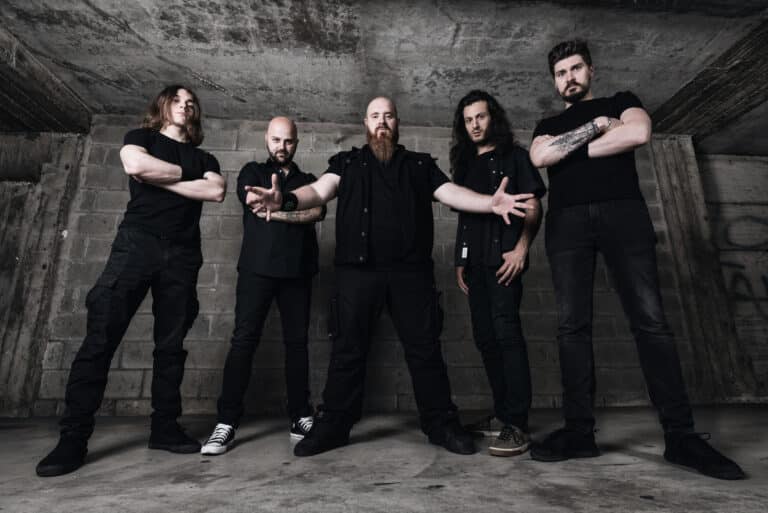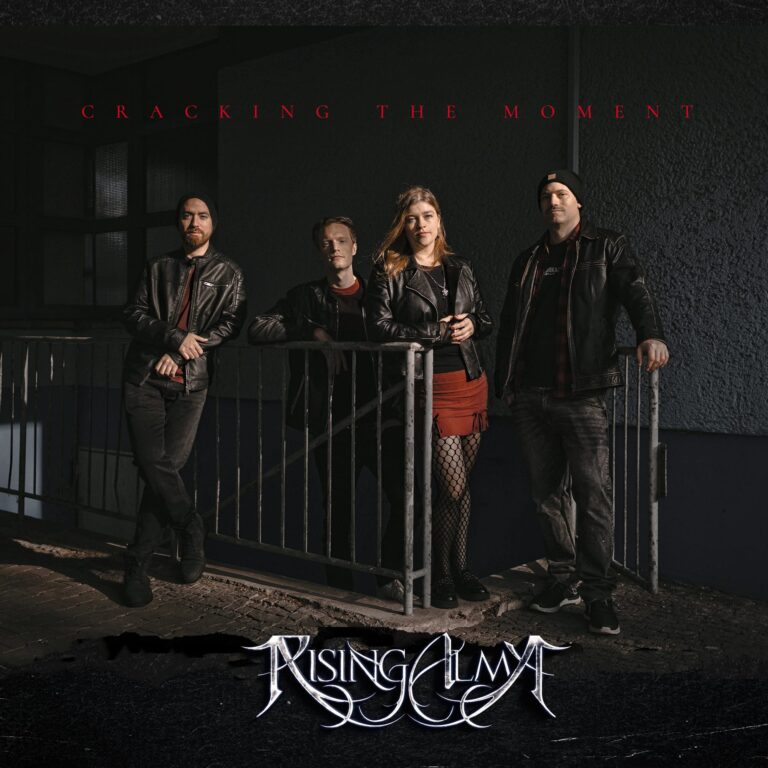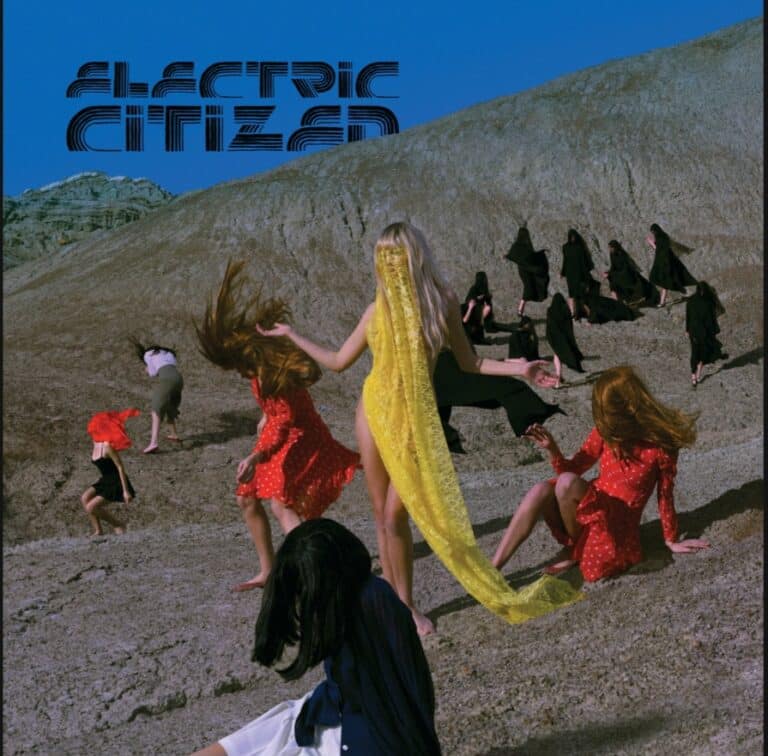*Please Note: This is the introduction to a book I am working on, looking at the history of Black Metal. As the introduction it simply sets the tone of what is too come. The main bulk of the book will be more extensive. Hell, the first real chapter, Norway Burns, is already going to clock in at about 20,000 words.*: Neil Gray
ORIGINS: BEFORE THE FROST
Black Metal wasn’t born in one place, and it wasn’t born all at once. There wasn’t a single gig, a single album, or a single scream that created it. It was a long burn, a steady corruption of Heavy Metal, as a handful of misfits, dropouts, and obsessives pushed things further into the shadows. They wanted music that wasn’t just heavy, wasn’t just fast, but hostile, dangerous, something that sounded like it shouldn’t exist.
If Heavy Metal was the bastard child of Rock and Roll, then Black Metal was the bastard child of Metal itself — the inbred, unholy one that never washed, never smiled, and never apologized.
Before the murders, the church burnings, and the tabloid hysteria, there was only one question driving the underground: What if metal wasn’t just about riffs and rebellion? What if it was about evil? Real evil.
That question became the seed. The first wave of Black Metal was a mess of sounds, images, rumors, and tapes, traded hand-to-hand across the globe. It was chaos, but out of that chaos came the foundations of a genre that would change Metal forever.
Proto-Black Metal.: Setting the Stage
Before Venom screamed “Black Metal,” before Quorthon dragged us into the eternal frost, there were earlier sparks. Rock had already flirted with the occult, with darkness, with mysticism. Black Metal didn’t arrive out of nowhere — it crawled out of the cracks of Heavy Rock and Early Metal.
Black Sabbath: The title track from Black Sabbath is ground zero. The thunderstorm, the tolling bell, the tritone riff (once called “the Devil’s interval”), and Ozzy Osbourne howling about a figure in black — it was unlike anything before. Sabbath weren’t Black Metal, but they opened the door to music that could scare people.
Deep Purple and Led Zeppelin: Not Satanic, but they embraced heaviness and mysticism. Zeppelin’s obsession with Aleister Crowley and the occult is part of the lineage. Purple’s scales, riffs, and volume fed into the DNA of later extremity..
Blue Öyster Cult: Their music was subtler, but the occult references, weird lyrics, and death-obsessed imagery were vital precursors. They gave Rock a taste of the esoteric.
Judas Priest: They gave Metal its uniform. The studs, the leather, the spikes — all taken from the gay S&M scene, repurposed into a look that would become inseparable from Black Metal. They didn’t preach Satan, but they made metal look dangerous.
Motörhead: Maybe the most important pre-Black Metal band. Lemmy never pretended to be Satanic, but the filth, the speed, and the chaos of Motörhead showed that metal could embrace noise and violence. Venom would steal their rawness wholesale.
By the late ’70s, Heavy Metal was splitting. The mainstream was becoming polished, operatic, and commercial. The underground wanted none of that. The underground wanted noise, speed, chaos, and fear. The underground wanted music that felt like a curse.
Venom — The First Strike (UK)
Newcastle, England, 1979. The industrial north of Britain, in the grip of Thatcher’s rule. Factories closing, unemployment high, nothing to look forward to. Out of this wasteland came three maniacs: Cronos (Conrad Lant), Mantas (Jeff Dunn), and Abaddon (Tony Bray). Together, they became Venom.
Venom couldn’t play like Judas Priest. They weren’t tight like Iron Maiden. They didn’t care. Their genius was chaos. They took Motörhead’s speed, added distortion until it sounded like the speakers were tearing apart, and wrote lyrics designed to scare parents and priests.
Welcome to Hell (1981): A debut so sloppy critics dismissed it as amateur trash. But the underground heard it differently — as raw power, as music that sounded like it had crawled out of Hell itself.
Black Metal (1982): The bomb. The title track gave the genre its name. Songs like “Countess Bathory” and “Don’t Burn the Witch” were ridiculous, sure, but also dangerous. Nobody had ever made an entire record so dedicated to Satan, blasphemy, and excess.Venom’s shows were carnage. Fire, explosions, never ending smoke machines, chaos. They didn’t just play gigs — they staged Black Masses with guitars. Even if they weren’t “serious Satanists,” they lived like they wanted to torch the stage and the audience with it.
Venom weren’t great musicians, but that wasn’t the point. They proved that music could be about attitude and impact, not perfection. They opened the portal.
Choice Cut: “Black Metal.” Not just a song, but a declaration.
Bathory — The Icy Dawn (Sweden)
If Venom opened the gates, it was Bathory who stepped through and revealed the frozen wasteland on the other side.
Founded in 1983 by Quorthon (Tomas Börje Forsberg), Bathory began as Venom worship. But almost immediately, Quorthon carved out his own sound. Where Venom were rowdy and cartoonish, Bathory was cold, sinister, and atmospheric.
Bathory (1984): A debut recorded cheaply, but it changed everything. The vocals were banshee shrieks, the riffs repetitive and droning, the production raw and hollow. It sounded inhuman.
The Return… (1985): Colder, darker, and more atmospheric. It introduced long, hypnotic tracks that felt ritualistic.
Under the Sign of the Black Mark (1987): A masterpiece. Songs like “Woman of Dark Desires” and “Enter the Eternal Fire” were ritual hymns. Quorthon’s shrieks were pure evil, and the music conjured visions of forests, tombs, and midnight rituals.
Bathory gave Black Metal its atmosphere. Quorthon made music that sounded like the Scandinavian landscape — endless forests, freezing cold, and eternal darkness. He proved Black Metal could be more than shock value. It could be transcendent.
Choice Cut: “Enter the Eternal Fire.” The first true Black Metal epic.
Hellhammer & Celtic Frost — Caveman Satan and Avant-Garde Darkness (Switzerland)
In Switzerland, 1982, a trio of teenagers formed Hellhammer. They were so raw and unskilled that Kerrang! called them “the most terrible band in the world.” But those caveman riffs, those primitive drums, and Tom G. Warrior’s iconic “UGH!” grunts became foundational.
Apocalyptic Raids (1984) was a joke to critics, but in the underground, it was scripture. Hellhammer were proof that atmosphere and intent mattered more than technical ability.
When Hellhammer fell apart, Warrior and Martin Ain rose from the ashes with Celtic Frost.
Morbid Tales (1984): Darker, sharper, heavier. “Into the Crypts of Rays” made Gilles de Rais a Metal antihero.
To Mega Therion (1985): A colossal slab of occult extremity.
Into the Pandemonium (1987): A bizarre, experimental record that incorporated classical, industrial, and avant-garde ideas.
Celtic Frost proved that Black Metal’s roots weren’t just primitive. They could also be artistic, daring, and experimental. They opened the door for every weird tangent black metal would ever take..
Choice Cut: “Procreation of the Wicked.” A riff so heavy it felt like a ritual hammer.
Mercyful Fate — Ritual and Precision (Denmark)
While Venom were sloppy chaos and Bathory were icy atmospherics, Denmark’s Mercyful Fate brought precision and ritual.
Fronted by King Diamond, with his falsetto wails and corpse-painted face, Mercyful Fate were theatrical and blasphemous. Unlike Venom, King Diamond wasn’t joking. His Satanism was serious, ritualistic, and incorporated into every performance.
Melissa (1983): A haunting debut filled with occult ritual.
Don’t Break the Oath (1984): One of the greatest early metal albums, drenched in Satanic imagery and precision musicianship.
Mercyful Fate proved that Black Metal didn’t have to be sloppy. They brought technical skill, complexity, and seriousness to Satanic Heavy Metal. They gave Black Metal its ritual dimension.
Choice Cut: “Evil.” The pure sound of ritualistic blasphemy.
Forgotten Cults — Italy, Eastern Bloc, and Beyond
Not every influence came from the big names. Across the world, cult bands were laying groundwork.
Bulldozer (Italy):: Venom-inspired, sleazier, nastier, more nihilistic. Their Day of Wrath (1985) was like a dirtier version of Motörhead filtered through Satanic filth.
Death SS (Italy): Shock rock, corpse paint, and horror theatrics. They looked like Black Metal years before the Norwegians did.
Tormentor (Hungary): Led by Attila Csihar, their Anno Domini demo (1988) was legendary in the tape-trading underground. Csihar’s experimental, operatic vocals pushed boundaries.
Root (Czech Republic): Big Boss created ritualistic, occult-heavy Black Metal years before most people noticed Eastern Europe’s contribution.
Possessed (USA): Often credited as the first Death Metal band, their Seven Churches (1985) blurred the line between Black and Death Metal with its speed, Satanic imagery, and extremity.
These bands weren’t famous. They didn’t sell records. But their influence, spread through demos and tapes, was enormous.
South America Madness — Sarcófago and the Extremists
If Europe was creating atmosphere, South America was creating pure violence.
Brazil’s Sarcófago, formed by former Sepultura member Wagner Lamounier, unleashed INRI (1987) — an album so extreme it made Venom look like pop stars. Full corpse paint, proto-blast beats, and lyrics like “Satanic Lust” and “Desecration of Virgin” made them infamous.
Other Brazilian bands like Vulcano, Holocausto, and Mutilator all contributed to a scene where extremity was the only goal.
This was music born from a context of dictatorship, poverty, and violence. It wasn’t theater — it was reality. South American Black Metal was a weapon.
Choice Cut: “I.N.R.I.” The sound of filth weaponized.
Tape Trading and Zines — The Underground Network
Black Metal didn’t spread through MTV or glossy magazines. It spread through obsession.
Tape trading: Fans dubbed cassettes of demos and albums, mailing them across the world. A Bathory tape copied in Sweden might reach Brazil, then Hungary, then Norway. Each copy degraded, but that hiss, that distortion, became part of the atmosphere.
Zines: Slayer Mag (Norway), Morbid Mag (U.S.), Kick Ass Monthly (Canada) — photocopied, handwritten, often filled with errors, but passionate. These were lifelines for fans in isolated towns.
Mythology: Without professional photography or media coverage, rumors became legends. Bands became larger-than-life because nobody really knew the truth.
This network was the lifeblood of the underground. It wasn’t just music — it was culture, shared in fragments, passed like contraband.
The Legacy of the First Wave
By the end of the ’80s, the first wave had burned itself out. Venom were becoming self-parody. Bathory moved toward Viking epics. Celtic Frost collapsed. Mercyful Fate split. The cult bands stayed cult.
But their job was done. They had created the language of Black Metal:
- Rawness over polish.
- Atmosphere over skill.
- Satanism not as a joke, but as a weapon.
- A sound and a look that scared people.
The first wave of Black Metal was messy. It was chaotic. It was contradictory. But in Venom’s chaos, Bathory’s frost, Hellhammer’s filth, Mercyful Fate’s rituals, and Sarcófago’s violence, the foundations were laid.
Black Metal had a name, a look, and a sound.
From their ashes, a new generation rose. A generation that didn’t want to just play Black Metal — they wanted to live it. And in Norway, this spark would start an inferno.
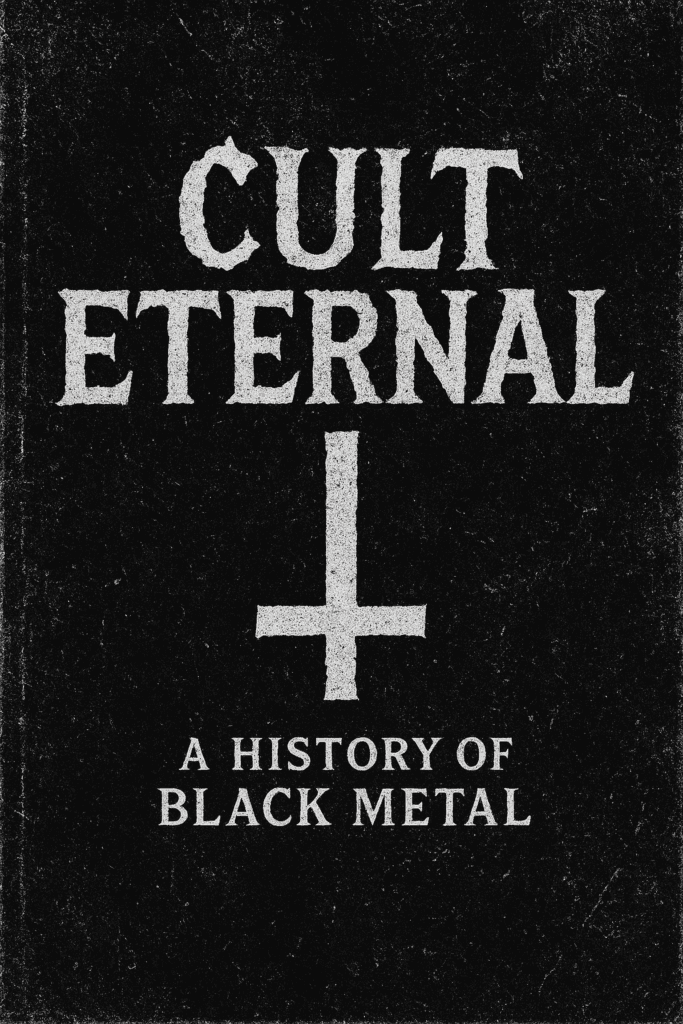
*My plan with this book is to give as extensive a history of Black Metal as I possibly can, and that needs to start at the very beginning, to the present day. As such, this book will not be an easy sale to a publisher, which is why I have chosen to go down the crowd-funding route, to be launched once all the ducks are in a row as I don’t want to fuck this up. It will also not be an easy read in places as the controversies and the people responsible for them – from Varg to those idiots who play NSBM – that stain that scars Black Metal are, at times, central to the movement or are, at least, part of the cloud that hangs iver it to this day.. If you back the project or read the book when published, you will see that I do not condone their actions in anyway, but these are parts of the past and our current times that cannot be ignored*: Neil Gray.

